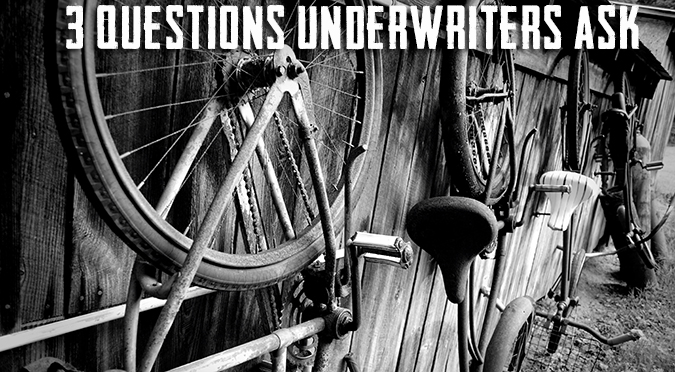If you’ve changed jobs in the past you know how confusing it can be to deal with your old 401k or other retirement plans. Often your options go unused due to the stress and general disruption that changing or losing your job can create. Below are several considerations to help you decide on the best option for you.
What will I be entitled to?
If you leave your job (voluntarily or involuntarily), you’ll be entitled to a distribution of your vested balance. Your vested balance always includes your own contributions (pretax, after-tax, and Roth) and typically any investment earnings on those amounts. It also includes employer contributions (and earnings) that have satisfied your plan’s vesting schedule. In general, you must be 100% vested in your employer’s contributions after 3 years of service (“cliff vesting”), or you must vest gradually, 20% per year until you’re fully vested after 6 years (“graded vesting”). Plans can have faster vesting schedules, and some even have 100% immediate vesting. You’ll also be 100% vested once you’ve reached your plan’s normal retirement age. It’s important for you to understand how your particular plan’s vesting schedule works because you’ll forfeit any employer contributions that haven’t vested by the time you leave your job. Your summary plan description (SPD) will spell out how the vesting schedule for your particular plan works. If you don’t have one, ask your plan administrator for it. If you’re on the cusp of vesting, it may make sense to wait a bit before leaving, if you have that luxury.
Don’t spend it
While this pool of dollars may look attractive, don’t spend it unless you absolutely need to. If you take a distribution, you’ll be taxed at ordinary income tax rates on the entire value of your account except for any after-tax or Roth 401(k) contributions you’ve made. And, if you’re not yet age 55, an additional 10% penalty may apply to the taxable portion of your payout. (Special rules may apply if you receive a lump-sum distribution and you were born before
1936, or if the lump-sum includes employer stock.) If your vested balance is more than $5,000, you can leave your money in your employer’s plan at least until you reach the plan’s normal retirement age (typically age 65). But your employer must also allow you to make a direct rollover to an IRA or to another employer’s 401(k) plan. As the name suggests, in a direct rollover the money passes directly from your 401(k) plan account to the IRA or other plan. This is preferable to a “60-day rollover,” where you get the check and then roll the money over yourself, because your employer has to withhold 20% of the taxable portion of a 60-day rollover. You can still roll over the entire amount of your distribution, but you’ll need to come up with the 20% that’s been withheld until you recapture that amount when you file your income tax return.
Should I roll over to my new employer’s 401(k) plan or to an IRA?
Assuming both options are available to you, there’s no right or wrong answer to this question. There are strong arguments to be made on both sides. You need to weigh all of the factors, and make a decision based on your own needs and priorities. It’s best to have a professional assist you with this, since the decision you make may have significant consequences–both now and in the future.
Reasons to roll over to an IRA:
- You generally have more investment choices with an IRA than with an employer’s 401(k) plan. You typically may freely move your money around to the various investments offered by your IRA trustee, and you may divide up your balance among as many of those investments as you want. By contrast, employer-sponsored plans typically give you a limited menu of investments (usually mutual funds) from which to choose.
- You can freely allocate your IRA dollars among different IRA trustees/custodians. There’s no limit on how many direct, trustee-to-trustee IRA transfers you can do in a year. This gives you flexibility to change trustees often if you are dissatisfied with investment performance or customer service. It can also allow you to have IRA accounts with more than one institution for added diversification. With an employer’s plan, you can’t move the funds to a different trustee unless you leave your job and roll over the funds.
- An IRA may give you more flexibility with distributions. Your distribution options in a 401(k) plan depend on the terms of that particular plan, and your options may be limited. However, with an IRA, the timing and amount of distributions is generally at your discretion (until you reach age 70½ and must start taking required minimum distributions in the case of a traditional IRA).
- You can roll over (essentially “convert”) your 401(k) plan distribution to a Roth IRA. You’ll generally have to pay taxes on the amount you roll over (minus any after-tax contributions you’ve made), but any qualified distributions from the Roth IRA in the future will be tax free.
Reasons to roll over to your new employer’s 401(k) plan (or stay in your current plan):
- Many employer-sponsored plans have loan provisions. If you roll over your retirement funds to a new employer’s plan that permits loans, you may be able to borrow up to 50% of the amount you roll over if you need the money. You can’t borrow from an IRA–you can only access the money in an IRA by taking a distribution, which may be subject to income tax and penalties. (You can, however, give yourself a short-term loan from an IRA by taking a distribution, and then rolling the dollars back to an IRA within 60 days.)
- Employer retirement plans generally provide greater creditor protection. Most 401(k) plans receive unlimited protection from your creditors under federal law. Your creditors (with certain exceptions) cannot attach your plan funds to satisfy any of your debts and obligations, regardless of whether you’ve declared bankruptcy. In contrast, any amounts you roll over to a traditional or Roth IRA are generally protected under federal law only if you declare bankruptcy. Any creditor protection your IRA may receive in cases outside of bankruptcy will generally depend on the laws of your particular state. If you are concerned about asset protection, be sure to seek the assistance of a qualified professional.
- You may be able to postpone required minimum distributions. For traditional IRAs, these distributions must begin by April 1 following the year you reach age 70½. However, if you work past that age and are still participating in your employer’s 401(k) plan, you can delay your first distribution from that plan until April 1 following the year of your retirement. (You also must own no more than 5% of the company.)
- If your distribution includes Roth 401(k) contributions and earnings, you can roll those amounts over to either a Roth IRA or your new employer’s Roth 401(k) plan (if it accepts rollovers). If you roll the funds over to a Roth IRA, the Roth IRA holding period will determine when you can begin receiving tax-free qualified distributions from the IRA. So if you’re establishing a Roth IRA for the first time, your Roth 401(k) dollars will be subject to a brand new 5-year holding period. On the other hand, if you roll the dollars over to your new employer’s Roth 401 (k) plan, your existing 5-year holding period will carry over to the new plan. This may enable you to receive tax-free qualified distributions sooner. When evaluating whether to initiate a rollover always be sure to (1) ask about possible surrender charges that may be imposed by your employer plan, or new surrender charges that your IRA may impose, (2) compare investment fees and expenses charged by your IRA (and investment funds) with those charged by your employer plan (if any), and (3) understand any accumulated rights or guarantees that you may be giving up by transferring funds out of your employer plan.
What about outstanding plan loans?
In general, if you have an outstanding plan loan, you’ll need to pay it back, or the outstanding balance will be taxed as if it had been distributed to you in cash. If you can’t pay the loan back before you leave, you’ll still have 60 days to roll over the amount that’s been treated as a distribution to your IRA. Of course, you’ll need to come up with the dollars from other sources.
Elevations team of CFS* Financial Advisors can help you to sort out your 401k and retirement plan options and make sure that you use the one that is best for your personal situation. Please give us a call at 303-443-4672 x2240 to set up a no-obligation appointment to discuss your options further.
**Before deciding whether to retain assets in an employer sponsored plan or roll over to an IRA an investor should consider various factors including, but not limited to: investment options, fees and expenses, services, withdrawal penalties, protection from creditors and legal judgments, required minimum distributions and possession of employer stock.
*Non-deposit investment products and services are offered through CUSO Financial Services, L.P. (“CFS”), a registered broker-dealer (Member FINRA/SIPC) and SEC Registered Investment Advisor. Products offered through CFS: are not NCUA/NCUSIF or otherwise federally insured, are not guarantees or obligations of the credit union, and may involve investment risk including possible loss of principal. Investment Representatives are registered through CFS. The credit union has contracted with CFS to make non-deposit investment products and services available to credit union members. For specific tax advice please consult a qualified tax professional.
Prepared by Broadridge Investor Communication Solutions, Inc. Copyright 2016.
Broadridge Investor Communication Solutions, Inc. does not provide investment, tax, or legal advice. The information presented here is not specific to any individual’s personal circumstances. To the extent that this material concerns tax matters, it is not intended or written to be used, and cannot be used, by a taxpayer for the purpose of avoiding penalties that may be imposed by law. Each taxpayer should seek independent advice from a tax professional based on his or her individual circumstances. These materials are provided for general information and educational purposes based upon publicly available information from sources believed to be reliable—we cannot assure the accuracy or completeness of these materials. The information in these materials may change at any time and without notice.


